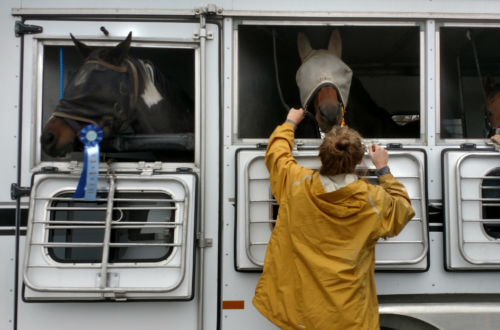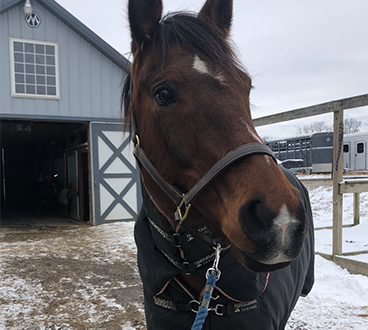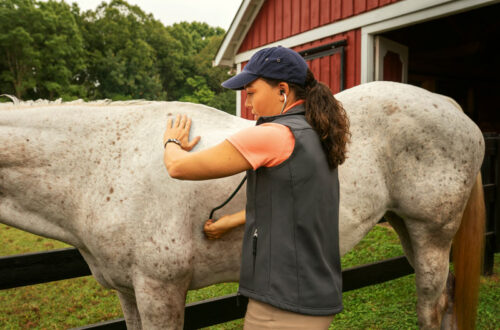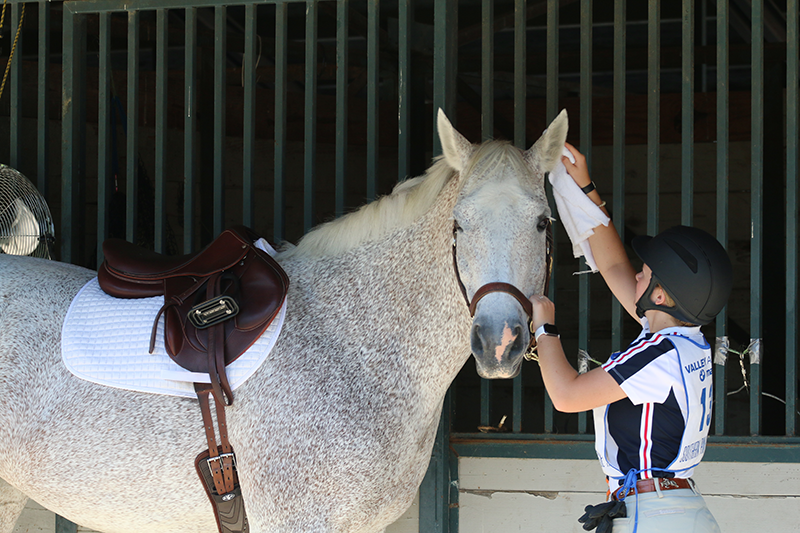
5 Mistakes to Avoid When Grooming Your Horse
By Liv Gude, Brought to you by Shapley’s Grooming Products, the Official Grooming Products Sponsor of USPC
Grooming your horse is more than brushing and creating shine; it’s health care for your horse. Every moment that you spend touching, brushing, and memorizing your horse’s body and behaviors lets you notice health problems much more easily in the future. When you develop a grooming routine during your daily barn chores and riding, it can be easy to fall into some bad habits or forget about an important step. Here’s a list of mistakes to avoid while grooming your horse and what you can do instead.
Mistake #1: Avoid Using Too Much Shampoo and Bathing Too Often
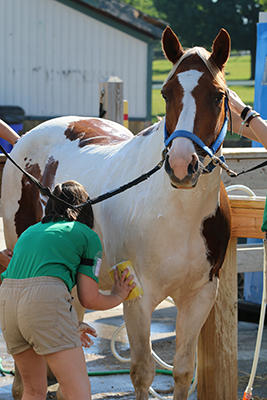
Deep inside your horse’s skin are hair follicles that hold one strand of hair each. Attached to each follicle is a sebaceous gland that secretes sebum. Sebum is your horse’s natural oil and serves many functions for skin and coat health. Your horse’s shine, waterproofing, and stain-repelling abilities and protection from microbes all come from sebum.
However, harsh shampoos and detergents remove sebum from your horse’s skin. Milder shampoos may also do the same if used too frequently. So if you use too much shampoo, too harsh of a shampoo, or bathe too often, the result is dry skin, brittle hair that stains easily, and no skin protection.
Instead, curry more to preserve that precious sebum. And when you do shampoo, use a mild formula created for horses and designed to boost shine.
If your horse needs help in the natural oil department, you can give him a hot-towel treatment with a grooming oil or use a sheen spray to protect the coat and help to repel stains. No-rinse shampoos or spot removers can help you groom localized stains instead of having to bathe your horse.
Mistake #2: Ignoring Your Horse’s Body Language During Grooming
As you groom your horse, notice his body and how he reacts to you. The signs of a happy horse include soft eyes, a relaxed leg, chewing, sleeping, wiggling the lower lip, and leaning into you as you groom. Some horses will even shift around to direct you to their favorite places for you to brush and scratch there.
Uncomfortable horses are fidgety, snap their teeth, swish their tail, or stomp their hooves. They could be ticklish, have sore, swollen, or tender places, or their skin may be sensitive.
Many horses display obvious behaviors that show their discomfort during grooming time. Therefore, noticing habits and consistent behaviors can help you take care of your horse. New behaviors often indicate that your horse isn’t feeling his best, and you should investigate to find out why.
Fear can also be a factor. If your horse is nervous around items that spray, use a cloth to apply grooming sheens and fly sprays. This also prevents products from irritating eyes and noses.
Mistake #3: Reusing Dirty Leg Wraps, Boots, and Saddle Pads
It can feel impossible sometimes to get your horse 100% clean, especially in the winter. But, a clean horse with clean tack will stay cleaner for longer.
The most important places to focus your grooming efforts are under tack and leg protection. Grit and sand under a saddle is like having dirt in your shoes. If those areas are clean, your horse will be more comfortable, and your saddle pads and boots will stay cleaner.
If you reuse dirty saddle pads and leg wraps, you are adding dirt to your horse, and sometimes it’s uncomfortable dirt.
Your best course of action is to brush your pads and boots with a stiff brush to remove surface hair and dirt, and then launder or clean them. When your tack and horse are dirt-free, you will do much less laundry in the long run.
Sheen sprays are a great way to shine up your horse, help to prevent future stains, and keep your horse clean, but don’t use them under your saddle and girth areas as they can cause slippage. You want your tack to stay put.
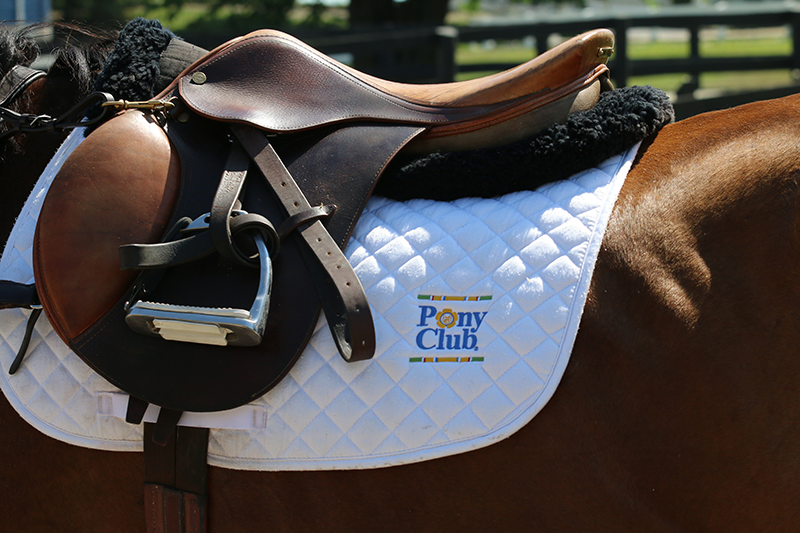
Mistake #4: Not Washing Your Grooming Tools and Brushes
Dirty curry combs and brushes make for dirty horses. They can also spread certain skin conditions between horses, such as ringworm, a fungal infection, and rain rot, which is a bacterial infection.
Weekly cleaning of your horse’s brushes and the grooming box you store them in is ideal. Create a soap solution of warm water mixed with chlorhexidine or shampoo to soak your grooming tools. Let everything soak for a few minutes, then scrub the brushes individually before rinsing.
If you use a shampoo to clean your grooming tools, choose one with tea tree oil to help boost anti-microbial properties.
Flick out excess moisture from the bristles before laying brushes on their sides to dry in the shade. Tools like hoof picks and curry combs can air dry or be patted dry with a towel.
Your horse’s skin and coat health will appreciate clean grooming tools.
Mistake #5: Skipping Your Horse’s Health Checks During Grooming
Make it part of your routine to check your horse’s vital signs regularly. Knowing what is normal for your horse helps you and your vet keep tabs on their day-to-day health. This is especially important when traveling with your horse and going to rallies and shows. Gatherings of horses mean viruses and other infections can travel through a showgrounds, be picked up by your horse, and be taken back to your barn at home. Awareness is the key to further prevention.
Knowing your horse’s baseline temperature, respiration rate, and pulse rate is vital, and checking them when you suspect your horse is not feeling well can alert you to early signs of trouble, especially after rallies and shows. See the sidebar “How to Check Your Horse’s Vital Signs” below and review the USPC Manual of Horsemanship Intermediate Horsemanship C1–C2 Level for more information.
Now that you are aware of these five potential grooming pitfalls, you can adjust your horse care routine to ensure your horse is healthy, shiny, and comfortable.
Check out all of the Shapley’s Superior Equine Grooming Products at your local tack store or online retailer to help build a great grooming routine, and visit www.shapleys.com for more expert grooming advice.
How to Check Your Horse’s Vital SignsIt’s important to know how to take your horse or pony’s temperature, pulse, and respiration and to know what is normal for them.Here are the typical values for horses: * Temperature – 98.5º to 101ºF; a temperature above 101ºF is considered a fever and you should call your veterinarian. * Pulse (Heart Rate) – 30 to 45 beats per minute, average is 36 beats per minute. * Respiration (Breathing) Rate – 8 to 16 breaths per minute How to take your horse’s temperature: Use a digital thermometer or a non-mercury shake-down thermometer (never use a glass thermometer). Add a lubricant, like petroleum jelly, to the thermometer. Standing next to your horse’s back leg, gently move the tail aside and insert the thermometer into the rectum. Don’t forget to clean the thermometer with soap and water or rubbing alcohol after each use. Check your horse’s pulse: Use your pointer finger and middle finger to locate the facial artery under their jaw. Run your fingers to the inside of the cheekbone, about halfway down the face, to find the artery. If you move your fingers from side to side, it may feel like a guitar string. Press up against the inside of the horse’s jaw bone to feel, and count the beats for 30 seconds and then multiply by two. The Pony Club curriculum will also teach you how to take their digital pulse and the heart rate, which uses a stethoscope. How to count the respiration rate: Use your horse’s belly, just in front of the flank, to count respirations. A breath in and out is one respiration. Place a hand on the flank or simply watch the area. Set a timer for 30 seconds, count the breaths, and multiply by 2 to get the respiratory rate. |

About Shapley’s — Official USPC Grooming Product Sponsor
Shapley’s has been producing superior equine grooming products for over 85 years, and top riders and horsemen trust Shapley’s for their horse’s health and shine. Learn more at Shapleys.com
This article on grooming was originally published in the 2023 Bonus Digital issue of Discover USPC magazine. Read more content from that issue.



